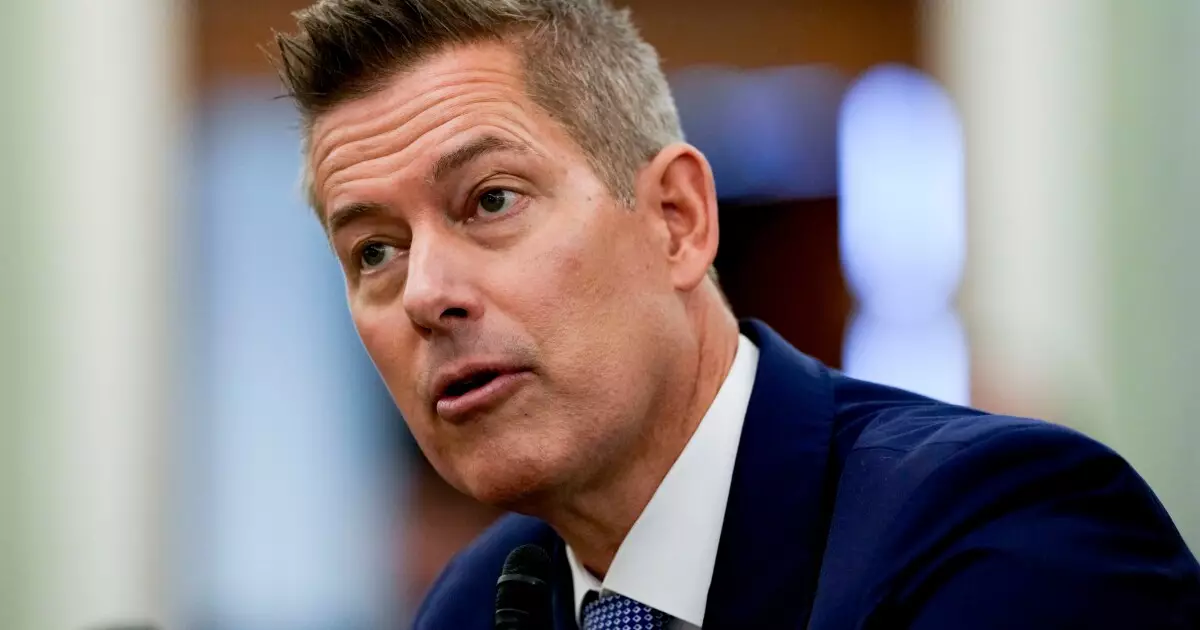The newly inaugurated Trump administration is poised to reshape the landscape of federal infrastructure funding, signaling a definitive pivot towards projects that align with the administration’s broader priorities. The U.S. Department of Transportation (DOT), under the leadership of Secretary Sean Duffy, has released a directive that introduces considerable changes to how transportation funding will be allocated, favoring regions with high birth and marriage rates and compliance with federal immigration laws. This article delves into the implications and underlying philosophies of this approach, exploring its potential effects on infrastructure development in the United States.
The memorandum issued by Transportation Secretary Duffy marks a clear strategic shift from previous federal funding guidelines. It establishes new parameters that prioritize projects based not solely on their operational merits but also on demographic and social criteria. This approach raises pertinent questions regarding equity and inclusivity in federal spending. Critics may argue that tying funding to demographic metrics like marriage and birth rates inherently discriminates against regions with different sociocultural profiles or those grappling with declining populations.
Additionally, the directive emphasizes the need for projects to possess a federal interest, cautioning against funding initiatives that serve primarily local political agendas. This directive seems to echo a familiar refrain from previous administrations—whether to prioritize federally significant projects or those that cater specifically to local constituencies. It reflects a broader philosophical stance that prioritizes economic analyses and cost-benefit calculations, thereby shifting the focus back toward utilitarian principles in infrastructure spending.
One notable aspect of Duffy’s directive is the priority assigned to funding projects in federally designated opportunity zones. These areas are typically characterized by economic distress and underdevelopment, making it crucial for the government to channel resources toward revitalization efforts. However, the emphasis on economic analysis raises questions about the balance between immediate community needs and long-term economic calculations. While rigorous analysis can ensure an efficient allocation of resources, it may overshadow the pressing concerns of local communities that require immediate support and infrastructure upgrades.
The further instruction for the department to review existing funding agreements underscores a proactive approach to amending grant and loan conditions. This will likely involve walking a fine line between adhering to existing laws and adapting policies that may bolster the administration’s objectives without infringing on the rights of states or localities.
Duffy’s directive explicitly states the administration’s intent to dismantle many programs introduced during the Biden administration, particularly those perceived as promoting climate activism and partisan goals. This antagonism marks a stark policy departure and reflects a more traditional conservative approach to federal infrastructure policies—one that favors an expedited process and reduced regulatory burden over comprehensive climate initiatives.
At a gathering of the American Association of State Highway and Transportation Officials (AASHTO), Duffy stressed the need to “trim red tape,” reflecting a commitment to making the funding process more efficient. This notion of empowering states contrasts sharply with a centralized, regulatory approach that characterized the preceding administration. It indicates a fundamental belief in states’ capacity to best determine their infrastructure needs without excessive federal oversight, and it hints at a more decentralized relationship between state and federal authorities.
In his address to AASHTO, Duffy emphasized fostering a collaborative environment between state and federal transportation authorities. This dialogue appears pivotal not only for the practical implementation of policies but also for nurturing a working relationship that can adapt to shifting priorities over time. The call for increased autonomy for states suggests a recognition of their expertise and unique challenges, potentially leading to innovative locally-driven solutions.
However, there lies an inherent risk in granting states greater authority without a robust evaluative framework. In the absence of stringent criteria, there exists the possibility of disparate access to funding, raising questions of fairness and accountability in how state projects are prioritized and executed. Ensuring that no region falls behind in infrastructure development necessitates robust oversight mechanisms and an equitable distribution of resources.
The recent memorandum from the U.S. Department of Transportation marks a significant shift in how federal funds are allocated for infrastructure development. While the new criteria may streamline funding processes and promote economic analysis, they also raise concerns about equity and local community needs. Balancing these competing interests will require ongoing dialogue and collaboration between federal and state entities, as well as a steadfast commitment to the principles of fairness and accountability. As the administration navigates these new waters, the potential ramifications of this directive on the future of U.S. infrastructure remain to be seen.

